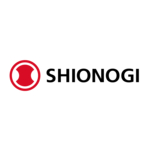ARTICLE AD BOX
New data from the largest European real-world evidence study of cefiderocol demonstrate positive outcomes including high rates of clinical success and day 28 survival across Gram-negative pathogens considered as critical priorities by the WHO in patients with limited treatment options1,2
OSAKA, Japan–(BUSINESS WIRE)–Shionogi & Co., Ltd. (Head Office: Osaka, Japan; President & CEO: Isao Teshirogi, Ph.D.; hereafter “Shionogi”) announces new data from the largest European real-world evidence study (PERSEUS) of Fetroja®/Fetcroja® (cefiderocol), an innovative siderophore cephalosporin, for the treatment of critically ill patients with carbapenem-resistant (CR) Gram-negative (GN) bacterial infections at the 34th ESCMID Global (formerly ECCMID) in Barcelona, 27–30 April, 2024.
Please see below under About Cefiderocol for full indications of Fetroja in the U.S.
The PERSEUS study is a retrospective, multicenter, observational chart review study designed to describe the efficacy and safety of real-world cefiderocol use in adult patients with GN bacterial infections.1 The analysis found patients receiving cefiderocol achieved an overall clinical success rate (primary endpoint, defined as the composite of clinical cure and/or survival at Day 28) of 84.3% and a 28-day all-cause mortality of 21.5%.1
The majority of patients had respiratory tract infections (47.9%) caused by Pseudomonas aeruginosa (66.7%), Klebsiella pneumoniae (10.0%) and Stenotrophomonas maltophilia (7.7%) as principal pathogens. Additionally,19.5% of patients had polymicrobial infections.1
The study included 261 critically ill adult patients with limited treatment options who received cefiderocol for less than 28 days as part of Shionogi’s Early Access Program in Spain. Of these, 64.8% were resistant to all tested antibiotics and 44.4% experienced treatment failure with prior antibiotics.1 The patients received cefiderocol consecutively for ≥72 hours for a confirmed GN bacterial infection. The patients included in the analysis were critically ill with nearly two-thirds (63.2%) in the intensive care unit, 47.1% on mechanical ventilation and 28% with septic shock.1 In addition to GN bacterial infections, patients also had serious comorbidities including immunosuppression (30.3%), solid or hematological tumors (23.8%), diabetes (22.2%), transplant (20.7%), chronic renal disease (13.0%) and chronic obstructive pulmonary disease (10.3%).1
Across these 261 patients, cefiderocol was generally well tolerated with six patients experiencing an adverse drug reaction.
Dr. Alex Soriano, Head of Infectious Diseases Service at Hospital Clinic in Barcelona, says: “The increasing resistance of Gram-negative bacterial infections to current therapies makes them difficult to treat. Real-world evidence is particularly important when reviewing antibiotic use for multidrug-resistant pathogens because of the challenges of conducting randomized clinical trials. These new data reinforce the importance of cefiderocol and contribute to the growing body of real-world evidence in patient care for those with difficult-to-treat pathogens that were resistant to other antibiotics.”
Isao Teshirogi, Ph.D, Chief Executive Officer of Shionogi, adds: “Shionogi is proud of its 60-year leadership in developing anti-infective medicines and we remain committed to our focus on innovative research that may help address the growing threat of antimicrobial resistance. Cefiderocol is included in the World Health Organization’s 23 Model List of Essential Medicines6, and these data demonstrate its continued importance in helping to improve outcomes for patients with some of the most difficult to treat infections.
We also know how important it is to ensure equitable, global, access to essential medicines like cefiderocol. That’s why we are working with like-minded partners GARDP and CHAI, to support the availability of this important antibiotic for people living in low- and middle-income countries.”
About Shionogi & Co. Ltd.
Shionogi & Co., Ltd. is a 146-year-old global, research-driven pharmaceutical company headquartered in Osaka, Japan, that is dedicated to bringing benefits to patients based on its corporate philosophy of “supplying the best possible medicine to protect the health and wellbeing of the patients we serve.” The company currently markets products in several therapeutic areas including anti-infectives, pain, CNS disorders, cardiovascular diseases and gastroenterology. Shionogi’s research and development currently target two therapeutic areas: infectious diseases, and pain/CNS disorders.
For more information on Shionogi & Co., Ltd., please visit https://www.shionogi.com/global/en.
About Shionogi in AMR
Shionogi has a strong heritage in the field of anti-infectives and has been developing antimicrobial therapies for more than 60 years. Shionogi is proud to be one of the few large pharmaceutical companies that continues to focus on R&D in anti-infectives.
About Cefiderocol
In Europe, cefiderocol is commercially available under the brand name Fetcroja® for the treatment of infections due to aerobic Gram-negative organisms in adults with limited treatment options.3 In the U.S., cefiderocol is available under the brand name Fetroja® and is indicated in patients 18 years of age or older for the treatment of hospital-acquired bacterial pneumonia, ventilator-associated bacterial pneumonia (HABP/VABP) and complicated urinary tract infections (cUTIs) caused by certain susceptible Gram-negative microorganisms.4 In Japan, cefiderocol is commercially available under the brand name Fetroja® and received manufacturing and marketing approval from the Ministry of Health, Labour and Welfare for various infections caused by strains resistant to carbapenem antibiotics among sensitive strains of Escherichia coli, Citrobacter species, Klebsiella pneumoniae, Enterobacter species, Serratia marcescens, Proteus species, Morganella morganii, Pseudomonas aeruginosa, Burkholderia species, Stenotrophomonas maltophilia, and Acinetobacter species.5
U.S. INDICATIONS
Fetroja® (cefiderocol) is indicated in patients 18 years of age or older for the treatment of complicated urinary tract infections (cUTIs), including pyelonephritis caused by the following susceptible Gram-negative microorganisms: Escherichia coli, Klebsiella pneumoniae, Proteus mirabilis, Pseudomonas aeruginosa, and Enterobacter cloacae complex.
Fetroja is indicated in patients 18 years of age or older for the treatment of hospital-acquired bacterial pneumonia and ventilator-associated bacterial pneumonia (HABP/VABP), caused by the following susceptible Gram-negative microorganisms: Acinetobacter baumannii complex, Escherichia coli, Enterobacter cloacae complex, Klebsiella pneumoniae, Pseudomonas aeruginosa, and Serratia marcescens.
USAGE
To reduce the development of drug-resistant bacteria and maintain the effectiveness of Fetroja and other antibacterial drugs, Fetroja should be used only to treat or prevent infections that are proven or strongly suspected to be caused by bacteria.
IMPORTANT SAFETY INFORMATION
CONTRAINDICATIONS
Fetroja is contraindicated in patients with a known history of severe hypersensitivity to cefiderocol or other beta-lactam antibacterial drugs, or any other component of Fetroja.
WARNINGS AND PRECAUTIONS
Increase in All-Cause Mortality in Patients with Carbapenem-Resistant Gram-Negative Bacterial Infections
An increase in 28-Day all-cause mortality was observed in Fetroja-treated nosocomial pneumonia, bloodstream infections, or sepsis patients compared to those treated with best available therapy (BAT) in a clinical study (NCT02714595). Most BAT regimens contained colistin. All-cause mortality remained higher in patients treated with Fetroja than in patients treated with BAT through Day 49.
Generally, deaths were in patients with infections caused by Gram-negative organisms, including non-fermenters such as Acinetobacter baumannii complex, Stenotrophomonas maltophilia, and Pseudomonas aeruginosa, and were the result of worsening or complications of infection, or underlying comorbidities. The cause of the increase in mortality has not been established. Closely monitor the clinical response to therapy in patients with cUTI and HABP/VABP.
Hypersensitivity Reactions
Serious and occasionally fatal hypersensitivity (anaphylactic) reactions and serious skin reactions have been reported in patients receiving beta-lactam antibacterial drugs. Hypersensitivity was observed with Fetroja. Before Fetroja is instituted, inquire about previous hypersensitivity to cephalosporins, penicillins, or other beta-lactam drugs. If an allergic reaction occurs, discontinue Fetroja.
Clostridioides difficile-associated Diarrhea (CDAD)
CDAD has been reported with nearly all systemic antibacterial agents, including Fetroja. Careful medical history is necessary because CDAD has been reported to occur more than 2 months after the administration of antibacterial agents. If CDAD is suspected or confirmed, antibacterial drugs not directed against C. difficile may need to be discontinued.
Seizures and Other Central Nervous System (CNS) Adverse Reactions
Cephalosporins, including Fetroja, have been implicated in triggering CNS adverse reactions such as seizures. Encephalopathy, coma, asterixis, and neuromuscular excitability have been reported with cephalosporins particularly in patients with a history of epilepsy and/or when recommended dosages of cephalosporins were exceeded due to renal impairment. Adjust Fetroja dosing based on creatinine clearance. If focal tremors or seizures occur, evaluate patients to determine whether Fetroja should be discontinued.
Development of Drug-Resistant Bacteria
Prescribing Fetroja in the absence of a proven or strongly suspected bacterial infection or a prophylactic indication is unlikely to provide benefit to the patient and increases the risk of the development of drug-resistant bacteria.
ADVERSE REACTIONS
The most common adverse reactions occurring in ≥2% of patients receiving Fetroja in the cUTI trial were: diarrhea (4%), infusion site reactions (4%), constipation (3%), rash (3%), candidiasis (2%), cough (2%), elevations in liver tests (2%), headache (2%), hypokalemia (2%), nausea (2%), and vomiting (2%). The most common adverse reactions occurring in ≥4% of patients receiving Fetroja in the HABP/VABP trial were: elevations in liver tests (16%), hypokalemia (11%), diarrhea (9%), hypomagnesemia (5%), and atrial fibrillation (5%).
Please click here for Full U.S. Prescribing Information for Fetroja® (cefiderocol).
Forward-Looking Statements
This announcement contains forward-looking statements. These statements are based on expectations in light of the information currently available, assumptions that are subject to risks and uncertainties which could cause actual results to differ materially from these statements. Risks and uncertainties include general domestic and international economic conditions such as general industry and market conditions, and changes of interest rate and currency exchange rate. These risks and uncertainties particularly apply with respect to product-related forward-looking statements. Product risks and uncertainties include, but are not limited to, completion and discontinuation of clinical trials; obtaining regulatory approvals; claims and concerns about product safety and efficacy; technological advances; adverse outcome of important litigation; domestic and foreign healthcare reforms and changes of laws and regulations. Also for existing products, there are manufacturing and marketing risks, which include, but are not limited to, inability to build production capacity to meet demand, lack of availability of raw materials and entry of competitive products. The company disclaims any intention or obligation to update or revise any forward-looking statements whether as a result of new information, future events or otherwise.
References
1 Ramirez P et al. Real-world effectiveness and safety of cefiderocol in patients with Gram-negative bacterial infections in the early access programme in Spain: results of the PERSEUS study. Abstract. ECCMID 2024.
2 World Health Organization. WHO priority pathogens list for R&D of new antibiotics. Available at: https://www.who.int/news/item/27-02-2017-who-publishes-list-of-bacteria-for-which-new-antibiotics-are-urgently-needed. Accessed: March 2024.
3 Fetcroja® Summary of Product Characteristics. Available at: https://www.ema.europa.eu/en/documents/product-information/fetcroja-epar-product-information_en.pdf . Accessed: March 2024.
4 Fetroja® Prescribing information. Available at: https://www.shionogi.com/content/dam/shionogi/si/products/pdf/fetroja.pdf. Accessed: April 2024.
5 Press release on November 30, 2023. Regarding the Acquisition of Manufacturing and Marketing Approval for the New Siderophore Cephalosporin Antibiotic Fetroja(cefiderocol) Intravenous Infusion 1g vial in Japan
6 WHO Model List of Essential Medicines – 23rd list, 2023. WHO Model List of Essential Medicines – 23rd list, 2023 Accessed: April 2024
Contacts
SHIONOGI Website Inquiry Form: https://www.shionogi.com/global/en/contact.html
SEU Press Office: pressoffice@shionogi.eu
U.S. Media Contact: ShionogiCommunications@shionogi.com
The content is by Business Wire. Headlines of Today Media is not responsible for the content provided or any links related to this content. Headlines of Today Media is not responsible for the correctness, topicality or the quality of the content.
The post ESCMID Global 2024: Shionogi presents real-world data demonstrating efficacy of Fetcroja® / Fetroja® (cefiderocol) in critically ill patients with certain difficult-to-treat bacterial infections appeared first on Headlines of Today.
.png)
 1 year ago
8
1 year ago
8










 English (US)
English (US)